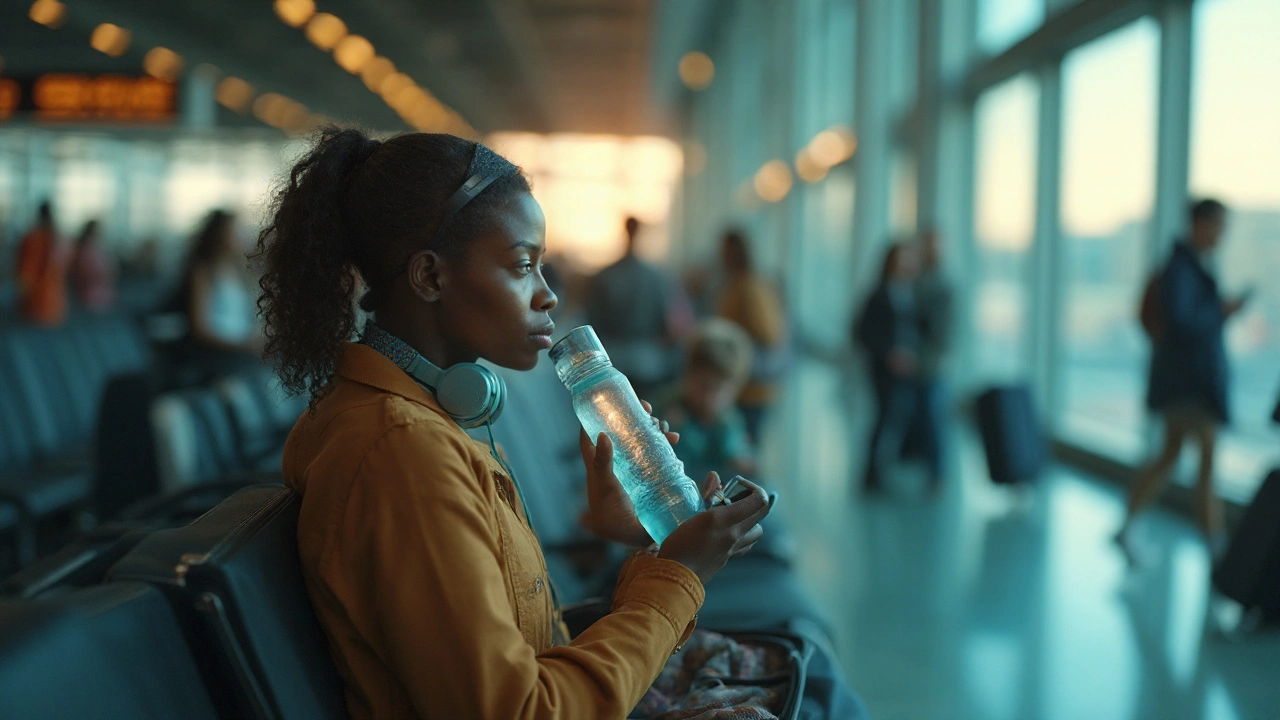
Migraines love chaos: sleep shifts, dry plane cabins, skipped meals, weird smells, bright sun. That’s a holiday in one sentence. You can’t control every trigger, but you can stack the odds-lower risk, shorten attacks, and keep your trip on track. Here’s the no-nonsense plan I use when I leave Brisbane for long flights or sweaty summer weekends.
- TL;DR: Build a pre-trip plan with your doctor, pack an attack kit in your carry-on, lock in sleep and hydration, and treat fast at the first sign.
- High-yield moves: dose early (within 30-60 minutes), drink regularly, keep your usual caffeine, wear eye mask/noise-canceling headphones, and avoid big meal gaps.
- Flights: book aisle, pack saline spray and ear plugs, pre-medicate if you’re predictable, and step up fluids; alcohol usually backfires.
- Destination: anchor wake/sleep, breakfast within an hour of waking, shade + sunglasses for midday glare, and plan low-stimulus breaks.
- If a migraine hits: follow a written 0-15-60 minute action plan; use non-oral options if nausea hits; know when to seek urgent care.
Plan Ahead: Your Migraine Travel Game Plan
Most travel migraines are a pile-up of small hits: sleep debt + dehydration + skipped meals + sensory overload. The fix is boring but powerful: remove three hits before they add up.
Set expectations. You may still get an attack. The goal is fewer and shorter.
Get medical ducks in a row (2-4 weeks out):
- Confirm your diagnosis and update your acute meds. Triptans, gepants (ubrogepant, rimegepant), and ditans (lasmiditan) are standard in 2025. The American Headache Society advises treating at the first sign-don’t wait it out.
- Ask about preemptive dosing for predictable triggers (e.g., a long-haul flight). Some clinicians suggest naproxen or a long-acting triptan before wheels up; this is individual, so get explicit instructions.
- If you’re on preventives (e.g., CGRP monoclonal injections, atogepant), time doses so you’re covered through the trip. A missed monthly shot can bite later.
- Get anti-nausea meds (ondansetron or metoclopramide). If oral meds fail when nausea hits, discuss non-oral routes: nasal triptan or suppository antiemetic where available.
- Supplements with evidence: magnesium (400-600 mg/day, citrate or glycinate) and riboflavin (400 mg/day) have modest prevention data. Start at least 2-4 weeks pre-trip if you’re going to try them.
Paperwork and packing to avoid headaches that aren’t headaches:
- Travel letter from your doctor listing your diagnosis, meds (generic names, strengths), and that they’re for personal use. It helps at customs and for refills abroad.
- Keep meds in original boxes with labels. Pack double what you need, split across two bags, with all acute meds in your carry-on. Bags go missing; migraines don’t wait.
- Liquids/needles: Know the security rules. Most airports allow liquid meds over 100 ml and needles with documentation, but declare them. Saline spray and small gel packs usually pass once declared.
- Insurance: Disclose migraine as a pre-existing condition when you buy travel insurance. That’s how you avoid claim dramas if you need a clinic visit or late checkout for recovery.
Build your carry-on attack kit (light but complete):
- First-line pain: ibuprofen/naproxen or what you use at home.
- Your script acute (triptan/gepant/ditan), with one backup dose.
- Antiemetic (ondansetron ODT), ginger chews or capsules for nausea (small trials show benefit), and electrolyte sachets.
- Saline nasal spray for dry cabins, lubricating eye drops, and a soft eye mask.
- Noise-canceling headphones or snug earplugs, and a thin scarf for scents and drafts.
- Blue-light-filter glasses if screens trigger you, or simple polarised sunnies.
- Collapsible water bottle, small snacks you tolerate (plain crackers, nuts, protein bar), and a pashmina/hoodie to turn any corner into a dark nook.
- Printed one-page plan: symptoms, timing, meds and doses, what to try next, and “When to get help.” Put it with your passport.
Decide your non-negotiables and write them down. Examples: “Breakfast within 60 minutes of waking.” “Water at security, refill before boarding.” “No new perfumes or candles in the room.” Travel scrambles memory; a list un-scrambles it.
About triggers: Don’t overhaul your diet on day one. Keep your usual caffeine intake the same. Sudden caffeine cuts or surges trigger headaches for many. Common sensitivities include red wine, aged cheeses, cured meats, and lots of MSG, but it’s individual-trust your diary over internet lists.
Evidence notes for the curious:
- Early acute treatment shortens attacks and reduces recurrence (American Headache Society guidance).
- Magnesium and riboflavin show preventive benefit in randomised data; effect sizes are modest (American Academy of Neurology/American Headache Society assessments).
- Aura typically lasts 5-60 minutes by the International Classification of Headache Disorders. If it’s longer or new, seek care.
Quick mental checklist before you leave home:
- Meds packed x2, action plan printed, insurance confirmed.
- Hydration targets set, snacks packed, headset charged.
- Arrival day is low-key; don’t stack a sunset hike and a 10 pm dinner after a red-eye.
These are the core migraine travel tips that pay off every time.
On the Move: Flights, Road Trips, and Jet Lag
Planes, cars, boats-same principle: control your inputs. That means air, light, sound, food, and motion. Here’s how I handle each leg.
Flying without feeding a migraine:
- Seats: aisle equals control. Easy bathroom access, stretch breaks, and less trapped perfume exposure. Bulkhead if you need legroom for neck-friendly posture.
- Dry cabin: planes pull moisture from you. Bring a bottle, ask the crew to top it up, and sip every 15-20 minutes. Use saline spray before takeoff and landing if dry air stings.
- Pressure changes: chew, yawn, or use pressure-equalising earplugs during descent. Congested? A doctor may suggest a pre-flight nasal steroid or short course of a decongestant; decongestants aren’t for everyone, so get advice.
- Lighting: wear an eye mask as soon as you sit. If you’re light-sensitive, reduce screen brightness to 20-30%, switch on dark mode, and prefer text over video.
- Food rhythm: small, frequent snacks beat two big meals. Aim for protein + complex carbs (nuts + crackers, yoghurt + fruit). Big sugar spikes and long gaps are common attack starters.
- Alcohol: it dehydrates and wrecks sleep architecture at altitude. If you drink, keep it to one, and chase it with water and food.
- Preemptive meds: if flights reliably trigger you, discuss taking naproxen or your acute an hour before boarding. For some, that alone cuts attacks in half.
- Move: stand every 60-90 minutes. Roll your neck gently, shrug shoulders, flex calves. Tight neck and jaw muscles amplify pain for many of us.
Road trips that don’t end in a dark room:
- Windows and smells: keep a light cross-breeze, but avoid cold air blasting your face. Unscented wipes beat heavy air fresheners.
- Glare management: polarised sunglasses, visor down, and clean windscreen to cut scatter. For backseat reading, use a soft warm light, not blue.
- Breaks: 15 minutes every 2-3 hours to drink, snack, stretch, and get out of the visual flow. Motion + scrolling is a combo many brains hate.
- Motion sickness: sit front passenger, eyes on the horizon; ginger 30 minutes before driving; acupressure bands can help some. If it’s severe, ask about meclizine or cinnarizine (check local availability and drowsiness).
Jet lag: nudge your clock, don’t fight it head-on.
- Shift your schedule 30-60 minutes toward the destination bedtime for 2-3 nights before you fly. Even one hour helps.
- Melatonin: 0.5-3 mg about 2 hours before your target bedtime can help; dose lower to reduce grogginess. Evidence supports it for jet lag, and it’s well-tolerated. Ask your doctor if you have conditions or take interacting meds.
- Light: morning light advances your clock; evening light delays it. Use this trick on arrival. Sunglasses at the wrong time can slow adaptation, so be intentional.
- First night: aim for a standard bedtime, but don’t panic if it’s not perfect. A short afternoon nap (20-30 minutes) can keep you functional without wrecking bedtime.
Little gear that punches above its weight:
- Neck support pillow if you’re prone to tension headaches; posture matters.
- Soft beanie or scarf to block drafts on buses and planes.
- Lip balm and moisturiser-dryness can amplify sensory discomfort more than you expect.

At Your Destination: Daily Habits, Food, Weather, Activities
Vacations flip routines. That’s the trap. Build two anchors-sleep and food-and the rest can flex.
Sleep without the migraine hangover:
- Pick a consistent 8-hour window. If you’re a 10 pm-6 am person at home, aim for something close, adjusted for time zone.
- Room setup: request a quiet room away from lifts; bring a clip for blackout curtains. White noise apps tame city sounds. Keep the room cool if you can-heat cramps neck muscles and fragments sleep.
- Bedtime ritual: 5-10 minutes of the same simple sequence (warm shower, stretch, eye mask, one book chapter). Your brain likes cues.
Food that fuels, not fires:
- Eat within an hour of waking. Then aim for a meal or snack every 3-4 hours.
- Carry known-safe snacks. Tour schedules slip; your blood sugar doesn’t care.
- Alcohol: test slowly and pair with food and water. Red wine is a common trigger for some, but not all. Don’t let one glass ruin two days.
- Local specialties: sample at lunch first. If something sets you off, it won’t cost you a night of sleep.
Hydration: your travel baseline is higher than at home. As a rule of thumb, sip enough to keep urine pale. On hot days or high-activity days, add an electrolyte sachet. If you’re petite or salt sensitive, pick low-sodium oral rehydration powders.
Weather, altitude, and pressure:
- Heat and sun: wear a brimmed hat, polarised sunnies, and reapply sunscreen (fragrance-free) every 2 hours. Plan indoor breaks 12-3 pm in hot climates.
- Cold and wind: a light beanie or headband prevents cold-triggered scalp and neck tension.
- Altitude: above 2,000 m, hydrate more, go easy the first day, and sleep lower if possible. Some migraineurs are sensitive to barometric shifts-this is where preemptive meds may help. Discuss with your clinician before you go hiking in the Andes or Alps.
Activities: pace is everything.
- Alternate big and small days. A dawn tour, a nap, then a calm evening beats two big excursions back-to-back.
- Group travel? Block a 30-minute buffer before dinner to decompress in the room-eye mask on, phone off. It’s a reset button.
- Spas and saunas: heat can trigger some. If you go, limit to short sessions and cool down slowly.
- Gyms and runs: gentle aerobic work is fine; max effort sprints in heat are a gamble.
Smells and sounds:
- Ask hotels to skip room fragrance. If they can’t, a brief airing with the window open helps. Your scarf doubles as a simple filter in museums or taxis heavy on cologne.
- Carry earplugs to surprise concerts and loud bars. Protecting your senses today protects tomorrow’s plans.
Quick destination checklist you can copy into your notes app:
- Wake window and first meal time set.
- Daily water plan (where to refill bottles).
- Midday shade break penciled in.
- One fallback easy dinner nearby for low-energy nights.
- Quiet, dark corner in the hotel scoped out for short resets.
When a Migraine Hits: Fast Action Protocols, FAQs, and Backups
Speed matters. Most guidelines say treat at first sign, not after you’ve “earned it.” Here’s a simple protocol you can print and follow.
0-15 minutes (as soon as you notice it):
- Hydrate with a glass of water or an electrolyte mix. Get to a dark, cool spot if you can.
- Take your anti-nausea first if you’re queasy (ondansetron ODT dissolves fast). If you can keep pills down, follow with your pain med.
- Choose your acute: triptan/gepant/ditan or NSAID combo based on your doctor’s plan. If you often wake with migraines, a long-acting option discussed pre-trip can help reduce recurrence.
- Cold pack to the neck/temples if that helps you; a warm pack to shoulders if tension is the driver. Two towels in a sink and the hotel ice bucket are a decent hack.
15-60 minutes (if pain is still building):
- Add caffeine if it helps you at home-roughly a cup of coffee’s worth. Keep it consistent with your usual daily total.
- Use non-oral routes if nausea escalates: a nasal triptan or suppository antiemetic if your region/country supplies them.
- Use your sensory toolkit: eye mask, noise cancelers, slow nasal breathing (4 seconds in, 6 out) to turn down the “alarm” response.
60-120 minutes (if you’re not turning the corner):
- Follow your doctor’s rule for a second dose or a different class (for example, triptan followed later by an NSAID, or vice versa). Don’t stack similar meds unless your clinician okays it.
- If you’re repeatedly failing oral meds due to vomiting, you may need a clinic for injectable antiemetics and fluids. This is where insurance pays off.
Red flags: get medical care now if your headache is “the worst ever,” very different from your usual, starts after a head injury, comes with fever/stiff neck, or you have new neurologic symptoms (weakness, slurred speech) that don’t fit your typical aura. Don’t push through those.
If you get aura: common visual aura lasts 5-60 minutes with zigzags, blind spots, or shimmering. If you take triptans, many clinicians suggest dosing when pain starts, not during pure aura, but follow your personalised plan.
Simple decision tree you can copy:
- If pain is mild and rising: dose now. Waiting makes meds work less well.
- If nausea is present: antiemetic first, then your acute. If vomiting is likely, reach for non-oral options.
- If you used a triptan in the last 2 hours: don’t repeat until the allowed window; consider NSAID or gepant if your doctor okayed that combo.
- If you’re sleepy but in pain: a short nap after dosing is fine; set a timer for 45-90 minutes to avoid groggy oversleeping.
Backup plans when things go sideways:
- Hotel flexibility: front desk can often extend checkout if you explain you’re unwell. A short, dark recovery beats sightseeing you won’t remember.
- Pharmacy abroad: pharmacists are great allies. Show your med list and ask for local equivalents if you run out or forgot something. In many countries you can get antiemetics at a pharmacy with pharmacist guidance.
- Clinic: urgent care can give IV fluids, antiemetics, and non-opioid pain meds like ketorolac. Tell them what has worked for you in the past.
- Local rules: some countries restrict codeine and pseudoephedrine; carry scripts and avoid buying controlled meds abroad without proper paperwork.
Mini-FAQ:
- Should I change my diet before travel? No. Keep your baseline steady. Travel is not the time for a new elimination diet; that uncertainty is its own trigger.
- Is caffeine good or bad? Both, depending on you. Keep your usual daily dose. A small caffeine bump with your acute can help; big swings bite back.
- Do blue-light glasses work? If screens trigger you, many people find relief. Evidence is mixed, but low risk. Pick amber/rose tints for light sensitivity.
- Ginger-real or placebo? There’s small randomized evidence for nausea relief and possibly mild pain help. It’s safe for most; check meds for interactions.
- Can I fly with an active migraine? If it’s mild and you can dose early, many manage fine. If it’s severe with vomiting or new neuro symptoms, delay and get care.
- What about kids with migraine? Same principles: routine, hydration, snacks, early treatment. Confirm age-appropriate doses with a pediatric clinician before you go.
Quick checklists you can save:
- Carry-on kit: acute meds, antiemetic ODT, NSAID, ginger, electrolytes, eye mask, earplugs/headphones, saline spray, sunnies, snacks, water bottle, scarf, written plan.
- Transit moves: aisle seat, hydrate each 15-20 minutes, light snacks each 2-3 hours, avoid alcohol on long-haul, stand/stretch every 60-90 minutes.
- Daily anchors: breakfast within 60 minutes of waking, water bottle always full, shade/quiet break around midday, steady bedtime ritual.
Next steps and troubleshooting by scenario:
- Frequent flyer: pre-book aisle seats, build a preemptive dosing plan with your clinician, and set up a “flight routine” checklist you reuse. Consider an annual review of your acute plan; new 2025 options (gepants/ditans) fit some patterns better than triptans.
- Road tripper: plan refuel stops that double as sensory breaks; avoid scrolling while moving; pack a cooler with safe foods so you’re not hostage to servo pies.
- Tropical holiday: schedule morning activities, siesta at midday, and evening walks. Electrolytes daily, not just when you crash.
- Altitude trek: consult ahead about acetazolamide if you’ve had altitude issues; space activities to allow acclimatisation; sleep lower if possible.
- Parent wrangling kids: front-load logistics the night before (snacks, bottles filled, meds handy) so you can protect your morning routine without a scramble.
You don’t need a perfect trip to have a good trip. You just need a simple plan you’ll actually use. Keep your anchors. Treat early. Carry your kit. And give yourself margin-the space between a full schedule and a good one is where migraines have less room to land.

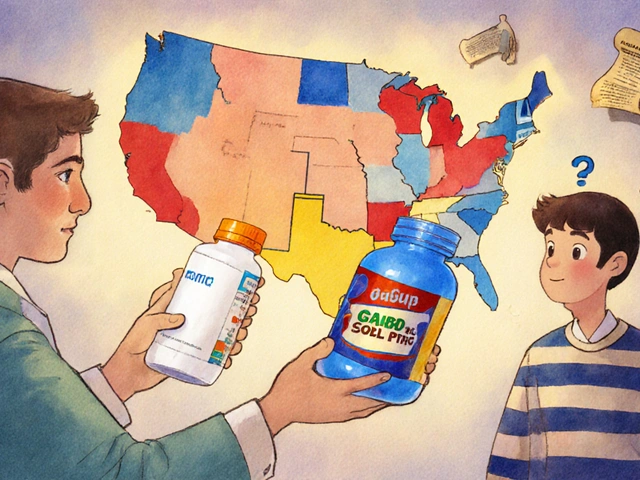
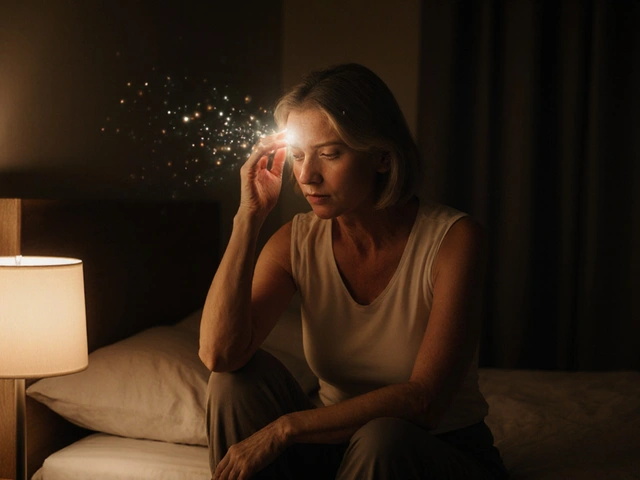
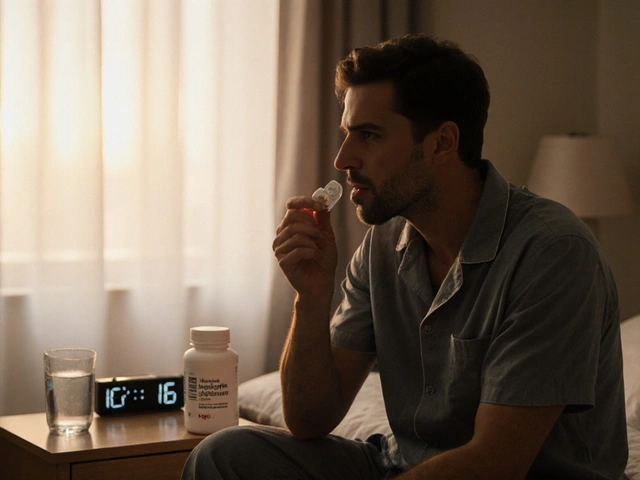


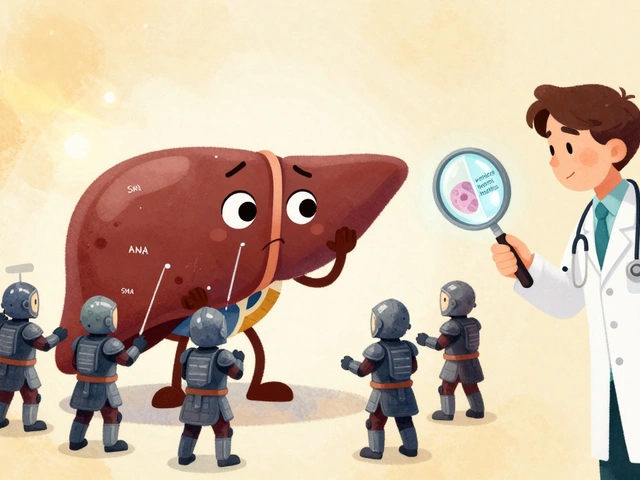
Wayne Keller
August 30, 2025 AT 16:22Just got back from a 12-hour flight and used this exact plan. Aisle seat, saline spray, eye mask, and two electrolyte packets. No migraine. I know it sounds boring but this stuff works.
Thanks for the no-nonsense breakdown.
Shana Labed
August 31, 2025 AT 16:42OMG THIS IS A GAME CHANGER!!! I’ve been suffering for YEARS and never thought to pack ginger chews + a scarf like a ninja. I’m literally printing this and taping it to my suitcase. Migraine warriors unite!! 🙌🌈
California Daughter
August 31, 2025 AT 23:42Wait-so you’re telling me I shouldn’t drink wine on vacation? And that I have to… plan? Like, schedule my water intake? And carry a *list*? Are we in 1998? This is the most exhausting thing I’ve ever read. I’ll just wing it and cry in a dark room like a normal person.
Vishwajeet Gade
September 2, 2025 AT 21:45USA only? What about India? We dont have ubrogepant here. Also why no mention of ayurveda? You Americans think your meds are best. My grandma cured migraines with turmeric milk. You people are so dependent on pills.
Casey Crowell
September 3, 2025 AT 08:11Bro this is fire 🔥 I’ve been using the 0-15-60 protocol since last month and my life changed. I used to cancel trips. Now I’m planning a trip to Bali. Also, I put my migraine plan in my phone lock screen. No cap. 🙏
Shanna Talley
September 4, 2025 AT 07:23It’s not about perfection. It’s about showing up for yourself. Even if you only do one thing from this list-like drinking water on the plane-you’re already winning. You’ve got this.
Samuel Wood
September 6, 2025 AT 00:32I read this and I just… I don’t know. I mean, the grammar is fine but the tone is so… corporate. Like a pharmaceutical pamphlet disguised as Reddit. Where’s the soul? Where’s the chaos? Migraines aren’t a checklist, they’re a existential crisis with a headache.
ridar aeen
September 7, 2025 AT 13:45Some of you are acting like this is gospel. But what if you’re on a tight budget? Or in a country where saline spray costs $15? Or you can’t afford CGRP injections? This advice is great for people who can afford to be meticulous. For the rest of us? We just suffer.
chantall meyer
September 8, 2025 AT 16:51How quaint. I’ve been traveling for 20 years across five continents. I’ve never once carried an 'attack kit.' I simply endure. You Americans treat migraines like a fashion accessory you can accessorize with ODTs and blue-light glasses. Real resilience is silence.
Judy Schumacher
September 9, 2025 AT 06:21Let me be the first to say: this is the most over-engineered, medically fetishized, wellness-industrial-complex monstrosity I’ve ever encountered. You’ve turned a neurological disorder into a 37-point bullet-pointed TED Talk. I’m not packing a 'pashmina' to block 'scents.' I’m packing a bottle of whiskey and a pillow. And I’m not apologizing.
Megan Raines
September 11, 2025 AT 04:37So… you’re telling me I can’t just nap in a hammock in Costa Rica and let the universe handle it? This feels like being told to wear a seatbelt while skydiving. I mean, sure, it’s nice… but do I really need to file a flight plan for my headache?
Mamadou Seck
September 11, 2025 AT 07:56Who cares about all this planning? Just take ibuprofen and shut up. I’ve been to 15 countries and never once had a migraine. Maybe you’re just weak. Or maybe you’re not drinking enough tequila.
Anthony Griek
September 12, 2025 AT 23:06As someone who grew up in a family where migraines were just 'bad days' and never talked about, this feels like a revelation. My mom never had a plan. She just sat in the dark for three days. I’m gonna try this. For her.
Norman Rexford
September 14, 2025 AT 02:46Look I get it, you want to control everything. But nature doesn't care about your schedule. You think a saline spray stops a migraine? Nah. It's the moon. It's the cosmic alignment. My cousin in Nepal says migraines come when the spirits are angry. Maybe try burning sage before you board? Just saying.
Lorne Wellington
September 15, 2025 AT 23:33Love this. I’m a Canadian who’s had migraines since I was 12. I’ve flown to Japan, Peru, and Iceland with this exact kit. The scarf? Lifesaver. The printed plan? I’ve shown it to 3 different ER nurses abroad. They all said ‘this is the best thing I’ve seen.’ You’re not over-preparing. You’re empowering yourself.
Will RD
September 16, 2025 AT 10:04Why are you all acting like this is a miracle? I tried everything. The eye mask, the ginger, the electrolytes. I still ended up in a hospital in Prague. This advice is nice but it doesn’t fix the fact that your brain is broken. Stop pretending you’re in control.
Jacqueline Anwar
September 16, 2025 AT 20:58It is with profound disappointment that I must address this document. The lexical choices are overly colloquial, the structure is unorthodox, and the tone lacks the gravitas befitting a neurological condition of such complexity. One does not 'pack a scarf' to manage cortical spreading depression. One manages it with pharmacological precision and intellectual rigor.
Ganesh Kamble
September 18, 2025 AT 18:15Why do you all care so much? I’ve been to 10 countries. Never used any of this. I just take 2 paracetamol and sleep. Done. You’re overthinking. This isn’t a military operation. It’s a vacation. Chill.
Jenni Waugh
September 18, 2025 AT 19:51Okay but have you considered that maybe your migraine is a metaphor for your inability to let go of control? Like… maybe the universe is trying to tell you to stop planning and just feel? 🌌
Theresa Ordonda
September 19, 2025 AT 05:28I love this so much I cried. I’ve been hiding my migraines for years because I thought I was weak. This? This is my manifesto. I’m printing 10 copies. I’m giving one to my boss. I’m laminating the attack kit list. I’m finally taking care of myself. Thank you.